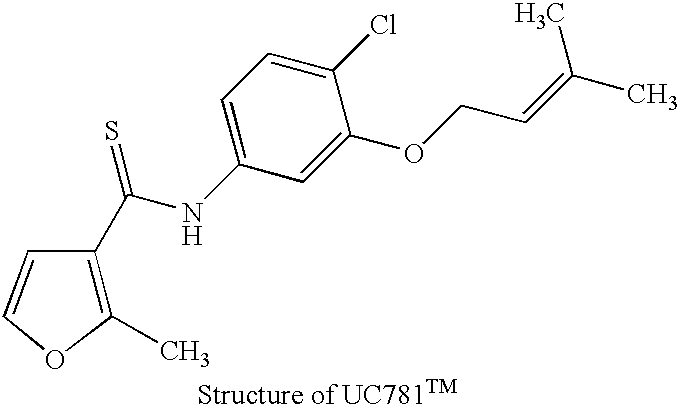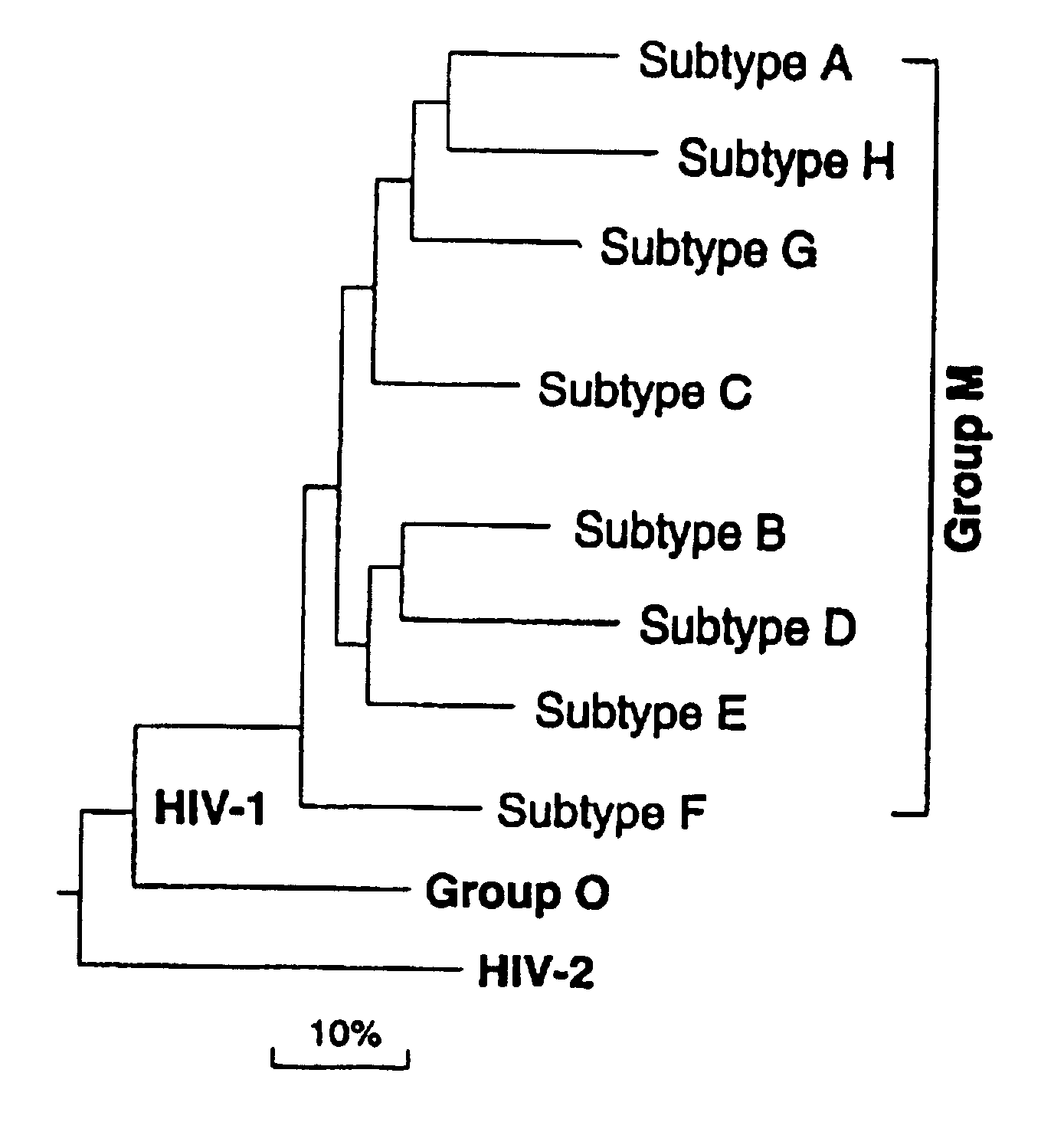Method for the development of an HIV vaccine
a technology of hiv vaccine and method, applied in the field of disease treatment and prevention, can solve the problems of lack of hiv vaccine in the early art, and achieve the effect of inhibiting the infectivity of diverse diseases, facilitating dendritic cell-mediated processing and presentation
- Summary
- Abstract
- Description
- Claims
- Application Information
AI Technical Summary
Benefits of technology
Problems solved by technology
Method used
Image
Examples
example 2
5.2 Example 2
Inactivation of HIV Particles and HIV-Infected Cells
The inactivation of HIV can be accomplished by taking advantage of compounds that bind the HIV reverse transcriptase with a high degree of specificity. Using the technique of photolabeling, a compound with high specific affinity for the HIV-1 reverse transcriptase can then be turned into an "active" moiety which will produce an irreversible inactivation of the reverse transcriptase upon exposure to ultraviolet light irradiation. This inactivation, in the case of the compounds already described and known to have this effect, meets the requirement of being specific for the reverse transcriptase of HIV-1. That is, their labeling and photoactivation is not accompanied by the alteration of any other component of the viral particle than the reverse transcriptase of HIV-1. That is an important element of this invention since the irreversible inactivation of HIV-1 reverse transcriptase will lead to non-infectious particles of ...
example 3
5.3 Example 3
Clinical Trial for HIV Vaccine
This example describes a protocol to facilitate an HIV vaccine clinical trial. The various elements of conducting a clinical trial, including patient treatment and monitoring, will be known to those of skill in the art in light of the present disclosure. Generally, the clinical study of the vaccine composed of inactivated viral particles should consist of the administration of such viral particles produced by the photolabeling of reverse transcriptase, as described in the present invention, to human subjects to evaluate safety and cellular, antibody, humoral and other clinical responses. The following information is being presented as a general guideline for use in HIV vaccine clinical trials. Information regarding design of clinical trials can also be obtained in the American Foundation for AIDS Research's HIV Experimental Vaccine Directory, Vol 1, No. 2, June 1998.
5.3.1 Eligible Subjects
Adult males and females HIV seronegatives.
5.3.2 Subj...
PUM
| Property | Measurement | Unit |
|---|---|---|
| Immunogenicity | aaaaa | aaaaa |
Abstract
Description
Claims
Application Information
 Login to View More
Login to View More - R&D
- Intellectual Property
- Life Sciences
- Materials
- Tech Scout
- Unparalleled Data Quality
- Higher Quality Content
- 60% Fewer Hallucinations
Browse by: Latest US Patents, China's latest patents, Technical Efficacy Thesaurus, Application Domain, Technology Topic, Popular Technical Reports.
© 2025 PatSnap. All rights reserved.Legal|Privacy policy|Modern Slavery Act Transparency Statement|Sitemap|About US| Contact US: help@patsnap.com



